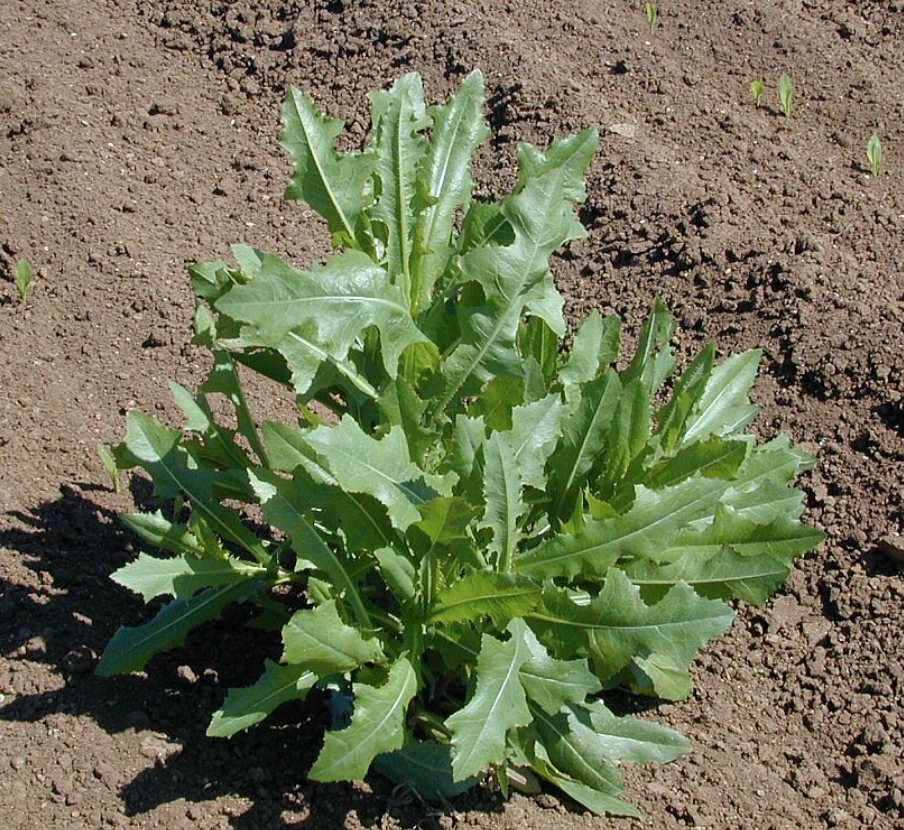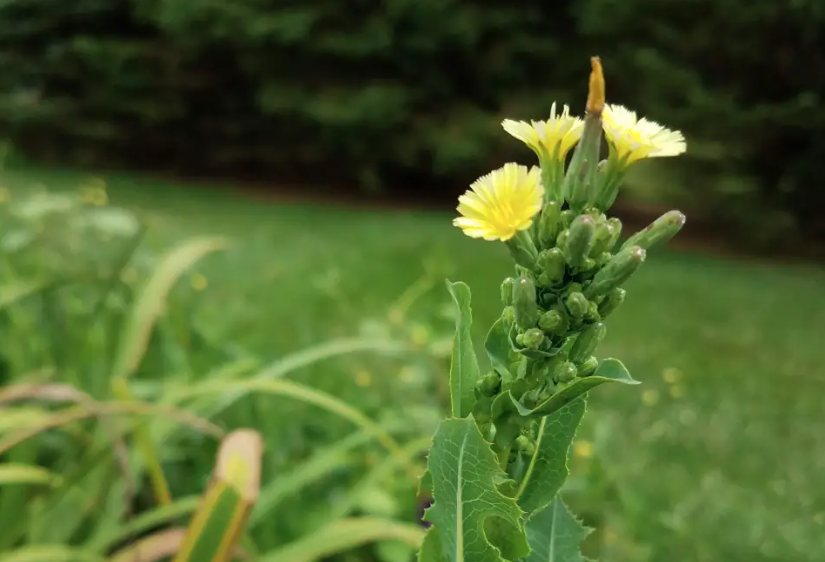Lactuca serriola L.
Lactuca serriola L., or Prickly Lettuce, is native to the Mediterranean region but is commonly found in this area as well. It can often be mistaken for dandelion or sow-thistle in the early stages of its development as it also forms a rosette of leaves close to the ground. As it is part of the same family as dandelions, it does contain milky latex so anyone with a latex allergy should be careful handling it. Prickly Lettuce spreads in roughly the same way as dandelion both through wind pollination and use of its tap root. It is often not appreciated by grain farmers as it is difficult to weed out and the flower buds are difficult to screen out of the grain harvest.1
Medicinal/Nutritional Uses
The young leaves and raw shoots are both edible with the leaves able to be eaten raw or cooked and the shoots able to be eaten cooked. Lactuca serriola L. contains compounds that are analgesic and sedating.2 While not historically very popular as a medicine, the plant has properties that can be used as such. As always, a little goes a long way and ingesting a huge amount is not advised (especially because of Lactuca serriola L.’s analgesic and sedating properties).

Prickly Lettuce most likely was brought over from Europe and naturalized here, however, there are many other species of Wild Lettuce that are native to the area and have been used medicinally by Indigenous groups in the area.
The milky white substance within the leaves and stems that can cause a reaction to people allergic to latex is believed to be the source of the sedating effect of the plant. This substance became popular in the 19th century to be used for whooping cough, kidney problems, and anxiety due to its soothing nature. It is to be noted that the variety, or species, used for this purpose were more likely Lactuca virosa rather than Lactuca serriola L.3
